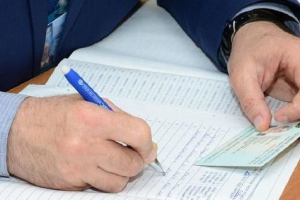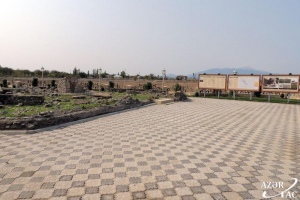


A rare collection of ancient seals with the names of officials of the time relating to the historical period of the kingdom of Judah, before its destruction by the Babylonian kingdom, was recently discovered near the walls of the Old City during excavations conducted by the Israel Antiquities Authority.
Dozens of seals made from small pieces of clay used to seal letters were well preserved in the city of David, despite the fires that once swallowed the ancient capital, and serve as proof of the reality of their owners.
According to Ortal Khalaf and Dr. Joy Usiel, excavation leaders funded by El Ir David (ELAD), the press illustrate the development of the administrative structures of Jerusalem during the First Temple period.
"The earliest prints contain basically a series of drawings," says a joint statement of archaeologists made on September 4. "It seems that instead of writing the names of officials, symbols were used to show who signed the letter or to show what it was that sealed it."
In the later period (from the time of King Hezekiahu (approximately 700 BC) and until the destruction of Jerusalem in 586 BCE) on the seals, the names of officials in ancient Hebrew were written.
"Thanks to these conclusions, we learn not only about the developed administrative system in the city, but also about those of its residents who worked in the civil service," they noted.
Some seals have biblical names that are still used, for example, Pinchas. "One particularly interesting press mentions a man named Ahiab Ben Menachem," the archaeologists said. "These two names are known in the context of the kingdom of Israel: Menachem was king of Israel, and Ahiab does not appear in the Torah, but his name resembles the name of Ahab, the notorious king of Israel from the books of the prophets." Although the spelling of the name is somewhat different, they believe that it is about the same person. "The version of the name that appears on the discovered seal, Ahab, appears also in the Book of Irmiyagu in the Septuagint, and also in the" Jewish Antiquities "of Josephus," they said.
Khalaf and Uziel added that the appearance of the name Ahiav is interesting for two main reasons.
"First, because it serves as a testimony to the reality of names that we are familiar with from the biblical account of the kingdom of Israel and which appear in Judea in the period after the destruction of the kingdom of Israel," they said. "These names are part of the evidence that after the expulsion of the ten tribes of Israel, the refugees arrived in Jerusalem from the northern kingdom and found their place in leadership positions in the Jerusalem administration."
Although Ahab in the Torah is a negative character, his name is still used, although in a different form. "It was used both in Judea in the last days of the First Temple, as reflected in Irmiyah and the press; as well as in the Babylonian exile after the destruction of the Temple and up to the period of the Second Temple, as can be seen from the writings of Josephus, "the researchers say.
Seals, along with other archaeological finds found during recent excavations, will be exhibited for the first time at the 18th annual archaeological conference "The City of David" held by the Megalim Institute, September 7 in the National Park "City of David".














